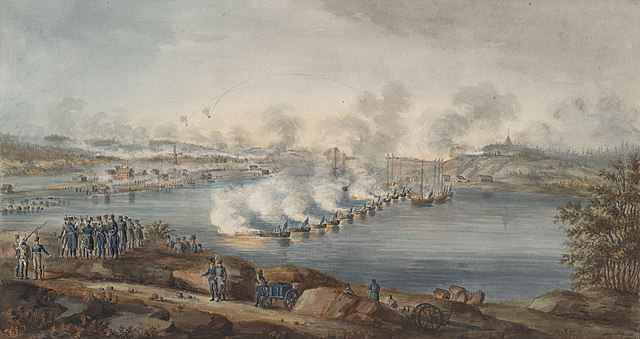A pojama or pojema was a type of warship built for the Swedish archipelago fleet in the late 18th and early 19th centuries. It was developed for warfare in the Archipelago Sea and along the coasts of Svealand and Finland against the Russian navy. The pojama was designed by the prolific naval architect Fredrik Henrik af Chapman for use in an area of mostly shallow waters and groups of islands and islets that extend from Stockholm all the way to the Gulf of Finland.
Line drawing of the Brynhilda, one of the three pojamas built for the Swedish navy
Contemporary model of an early 18th-century Swedish galley from the collections of the Maritime Museum in Stockholm. Small galleys like this one were a mainstay of the first Swedish coastal fleets.
Contemporary model of Brynhilda (built in 1776) at the Maritime Museum in Stockholm. The model is flying the blue three-tongued flag of the archipelago fleet from the stern.
Closeup view of the stern of the Brynhilda model
The archipelago fleet, officially the "fleet of the army", was a maritime branch of the Swedish Armed Forces which existed between 1756 and 1823. Its purpose was to protect the coasts of Sweden, which was surrounded by a natural barrier of archipelagoes. Throughout its existence, the fleet was a largely independent arm of the Swedish Army, separate from the Swedish Navy, with the exception of a few years in the late 1760s. In a number of respects, it was a precursor of the Swedish Coastal Artillery and its coastal fleet.
Archipelago fleet
An original three-tailed ensign of the archipelago fleet from the collections of the Maritime Museum in Stockholm
The battle of Svensksund in July 1790, one of Sweden's most decisive naval victories. Contemporary painting by Johan Tietrich Schoultz.
The battle of Ratan near Umeå, the final engagement of the Finnish War, where the archipelago fleet fought to hold off invading Russian land forces.







